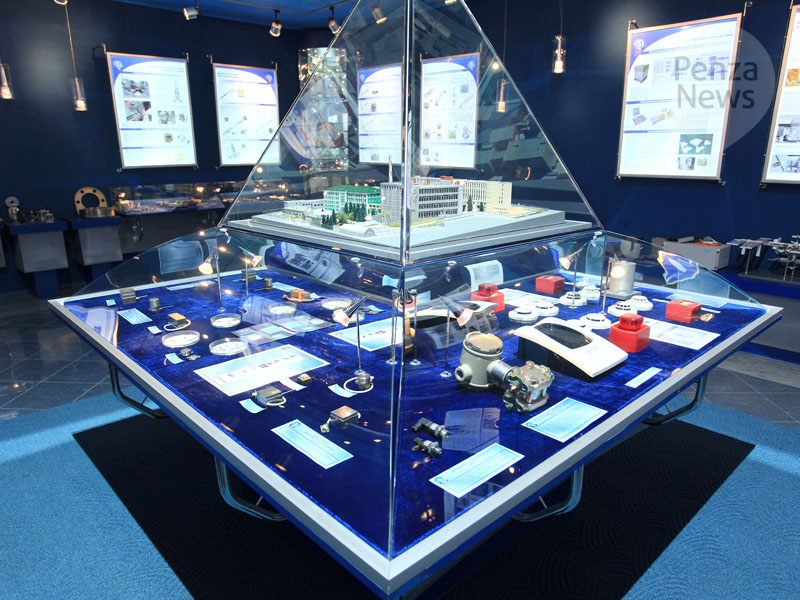Soviet and post-Soviet research institutes and design bureaus as a conveyor belt for the destruction of development resources

In the field of public discussion of the problems of our country, issues such as the insufficient pace of technological progress, the lack of specialists and ordinary labor force, and much more, constantly come up, and in this style.
Discussing all this in general is somewhat problematic for an ordinary person, but you can use the approach “the sea is reflected in a small drop” and see how the same problems exist in a medium-sized research institute.
Read more
In 2008, I got a job as a leading engineer at the Research Institute of Physical Measurements, Penza.
For me, working at this research institute was more than familiar; I worked there from the mid-80s to the mid-90s. Since its inception, NIIFI has been focused on creating sensors and specialized measuring equipment for the space industry.
The beginning of the 2000s was characterized by the fact that oil prices began to rise, some money appeared in the state, but at the same time a series of bright and colorful failures began to occur with our missiles. And the question – what is happening there with our missiles – created a focus of tangible financial flow at NIIFI.
Since this organization employs a bunch of people who are related to each other, then, in addition to official silence on all sensitive issues, the organization was riddled with rumors that our total research institute budget first reached 0.7 (approximately 2008–2009), then 0. 9; then 1.3; 2.1 and 2.7 (2012) billion rubles.
Here you can ask a very simple question – who will do the intellectual content of projects for these generally huge financial flows.
Here it is worth looking at the main caliber battleship Institute – Doctors of Technical Sciences.
Here, in the first place, naturally, is Red Tie – General Director, also known as Chief Designer, Doctor of Technical Sciences, Honored Mechanical Engineer of the Russian Federation, Professor, Corresponding Member of the Space Academy, author of a huge number of articles and inventions (in any documents, all these positions should be abbreviated or you should never write with a small letter).
There is only one problem here: Red Tie did not write either these articles, or inventions (at least since the mid-80s), or his dissertations. In the past, he simply worked as deputy director for scientific work. In the 80s, communication at an average and higher level resembled in some places the communication of packs of mongrels during the rutting season, and Red Tie worked as a “wall of cotton wool” into which waves of squabbles went.
Another doctor of science at the research institute was a figure nicknamed White Fang. He can most correctly be described as a champion of Penza and, perhaps, the entire Penza region in writing and receiving copyright applications for inventions.
We common people often misunderstand what inventions are.
Just imagine, really smart specialists are thinking and working on some complicated project. When they reach a practically valuable result, it will take many stages and a lot of time. Although already approximately in the middle of the work it becomes clear where the project should be headed. And at this time the White Fang is circling around and around. He doesn't need the final result, he needs to grab and cling to the fog in the form of which ideas exist at this stage of the project.
Actually, the best form of registration of an invention is this fog – a form ideally convenient for trolling (the actual real purpose of patent activity), and which can be capitalized even before any practical result. The explanation for why White Fang was not regularly given a nickel for his “inventions” somewhere in the toilet is very simple: his dad was an important leader in the penitentiary system.
Grandmother Tonya was the third Doctor of Science at the research institute.
She headed the accelerometer division. Somewhere in the fall of 2008, she ran into our laboratory and began to explain that her accelerometers were taken for testing somewhere in Moscow, put into centrifuges… and they all died successfully.
She tried to apply the popular method of solving problems, which consists in running around everywhere and cackling: “Here is the problem!.. Here is the problem!.. What to do?.. What to do?”
The young people in our laboratory dealt with such problems much easier – they simply falsified test results. I don’t have exact information whose accelerometer was used on the Luna-24 device, but if it was the development of Tony’s grandmother (or her protégé), then the result obtained is quite natural: she was always trying to sit on someone’s tail in creating developments , but there have been terrible tensions with this since the beginning of the 90s.
In addition to the above-mentioned high-status scientific figures, the NIIFI had a thinner audience – all sorts of candidates of science. Some of them made a discovery in their dissertation – they simply took and discovered a cubic spline, someone increased the sensor signal from 5 millivolts to about 4.5 volts, for others, their dad simply ordered a dissertation from the local polytechnic.
I don’t know anything about the dissertations of some of them, but judging by what they wrote in scientific reports, their dissertations could contain the most terrible obscurantism.
It is worth emphasizing that the actual organization of work at NIIFI was directed and mostly carried out by two “gray cardinals”. Both of them had suffered from alcoholism in the past, but by that time they had already managed to either quit or become coded.
It was they who knew better than anyone how to correctly design and organize all the work according to all the canons, what tests follow what tests, where, what kind of letter should be placed and in what corner. And when any difficult question arose regarding military acceptance from a particularly complex bureaucratic scholasticism, it was these two who could set the movement in the right direction.
When I got a job at NIIFI in 2008, the research institute seemed to me like a terribly overripe fruit. They were completely shut down, absolutely everywhere. I assumed that it was possible to come to an agreement with them and rectify the situation.
Let's start with the simplest
It was I who, at the turn of the 90s, obtained, mastered PCAD 4.5 (CAD for electronics development) and put it into work, first for my laboratory, and then transferred this knowledge to the designers of NIIFI.
But when in 2008 I looked at the current state of the designers of that at that time already prehistoric PCAD, I discovered that out of the entire set of commands they used a rare sadomasia – Draw/Line (draw/line), Draw/Circ (draw/circle) , Draw/Rect (draw/rectangle). PCAD 4.5, although old, was a very serious system in which almost all work should be done in terms of Comp (component) and Wire (connection).
In 2010, the Altium Designer electronics development system was purchased for NIIFI. Training was provided on this system.
And based on this simplest case, we can see a typical method for destroying development resources.
Girls with zero tracing experience and almost zero desire to delve into the complexities of the system were sent to study at Altium Designer.
After training, one of them put the parts in the form of squares in one pile, rectangles in another pile, and turned on auto-routing.
The parts were connected by conductors, and the “100%” flag was displayed. For anyone who knows anything about tracing, this kind of work will make the hair on end stand on end.
For comparison: our tracer will not only complete the entire annual NIIFI program in the company where I work now in one or two weeks, but will also do it with a full understanding of all aspects of electrodynamics, printed circuit board technology and subsequent production on the assembly line.
When I tried to explain to Gena K., this girl’s boss, the essence of the complaints, he first began to smile, then laugh. He had reinforced concrete excuses – wherever possible, he would do everything according to the regulations from the 80s. Automatically, regulatory control will not make any claims against him. And the entire remaining research institute does not have enough brains to understand where the mystical effects come from.
Somewhere around this time, CEO Red Tie held a meeting on the implementation of CAD systems. According to the stories, he rubbed something with inspiration for a whole hour and a half.
Purely theoretically, one could approach him and try to offer and explain something. At that time, I had good experience in the development of printed circuit boards, electronics modeling, finite element analysis, mathematical packages, embedded software development, and initial experience in the DSP field.
But here it all comes down to the fact that the Red Tie by this time was an openly psychotic grandfather, and the objective essence of the proposals boils down to the fact that you not only do something yourself, but also the rules of a large mass of people change, for example, the design of printed boards are being converted from industry standards to IPC standards, for example, the 7351 configuration is changing from lead-out components to surface-mount counterparts. Any such movement creates a colossal range of issues.
Does anyone need it? At that time, the flow of space money had already stopped.
Around 2011, NIIFI installed two automatic soldering lines. The Israeli who set them up suggested soldering a board from real projects upon completion of the work.
And then the women from the design department brought their packs of paper waste paper documentation and looked questioningly – “where should I put them?” It is logical to assume that there was no such place there. In the next 5 years (this is only what I know for sure), these lines were turned on only upon the arrival of inspection commissions.
This story is typical for NIIFI.
Since the mid-80s, there have been a lot of waves in the organization, the tasks of which were “development”, “implementation”, “application”… The stated goals were different: from the development of large and small computer equipment to extremely ambitious ones, such as the development of their own microcircuits, systems with built-in microprocessors. The money and resources allocated there were quite decent. Now, in retrospect, it is very clearly visible and understandable what results could have been achieved and what was actually achieved.
In most cases, a standard technique was used: relying on a group of random people with minimal self-motivation and interest in the task at hand.
There was also great meaningfulness in this type of activity. Here we can develop the presentation in the direction that a number of heads of research institutes already in Soviet times had connections to the shadow economy. There are other thoughts in this direction. However, the chief power engineer of the Penza Diesel Plant, Yura E. (2006–2008), formulated them most frankly:
– Listen, let’s step aside so that they don’t hear us… As a senior and as a boss, I have to explain something… I see our task as being to ensure that we grab all the money allocated for development… And the development itself?.. And the development itself must be carefully failed… But it must be done in such a way that it looks like it’s not us… That others are to blame for this…
Fragment from.. The history of the attempt to create the HyperBar system in Russia
At NIIFI, something similar looked a little more modest, for example, like a conversation between two laughing people:
– Listen, how are you here? Have you started developing the technology for soldering lithium niobate crystals for surface acoustic wave sensors? Haha.
– Yes Yes! They really got involved. Haha.
It is clear that funding for this work was received, but the result was supposed to be quietly leaked.
The “quiet drain” option can be called more of an option for amateurs.
The option had much greater sadistic potential when one took on the task “Professional,” who, for example, tried to cram into the project the maximum possible amount of all kinds of “good” ideas and wishes.
At NIIFI we had a laboratory of Mikhail Fedorovich, who created simply monstrous projects. Before achieving any clear result, he always lacked resources. Although they were given to him in the first place, it was still impossible to get the result… And then… The resources and budgets of neighboring laboratories suffered. Mikhail Fedorovich acted in this style from 1968 to 2010.
It should be understood that the space research institute is a very rich collection of technological and design capabilities. The research institute had the opportunity to order intellectual development of projects from professors and graduate students of MVTU, KhAI, LETI…
Definitely, NIIFI had results, especially if we are talking about the 80s.
But when in 2009 I asked the “gray cardinals” why not restore the best developments from the turn of the 90s on capacitive sensors – really the most outstanding direction of NIIFI, I received the answer that there are projects themselves, but they do not have the letter “ O” (and Nikolai Georgievich, a very intelligent person who developed all this, was given a kick in the ass in the 2000s).
The actual reason for the excuse was that even the “gray eminence” in electronics did not have the qualifications to understand and calculate multi-loop dynamic feedbacks of continuous and discrete time. Later I became convinced that the “cardinal” did not understand analysis even using a Bode diagram.
In 2009, while climbing the stairs of the main building, I several times met a couple animatedly talking. One of the talkers was the Deputy General for Science and Design Activities, but who the other was was unclear to me for some time.
It later turned out that the second was the head of RosCosmos.
The very liveliness and duration of their discussion gave rise to bewilderment.
Somewhere around this time, Red Tie left the directors. In his place was put a new, elite, young one, who came with a bunch of even younger entourage.
The young director and deputy for scientific work formed a very interesting couple.
The new director expresses a desire to renew the team, to see significantly more young people, including in management. The deputy takes the visor code and begins to push out pensioners and push out those “no longer promising by age.”
Meetings are held in the assembly hall “only for young people,” where the deputy for science passionately talks about how they are beginning to rely on young people and what tasks will be set for them. Well, for example…
…Until now, NIIFI has made very little progress in the field of nanotechnology. Here we are already behind. I see our task is for you to step over this stage and immediately start working at the femtotechnology level…
For reference: the distance between the centers of carbon atoms in a benzene molecule is 0.139 nanometers; 1 nano-m = 1,000,000 femto-m.
Then, in 2011–2003, an import line for the production of piezoceramics was installed at NIIFI (cost: 1.5 billion rubles). And at meetings with young people, the deputy for science said that
…this will also make it possible to turn Penza into a Russian center for the development and production of ultrasonic medical equipment… (2011)
Young people looked at such ideas with cheerful optimism (whatever, they would soon learn how to re-stick nameplates, and in the field of falsifying tests, for example, for electromagnetic compatibility, they had already advanced quite far).
Around this time, a fashion was introduced that all significant figures in research institutes should wear shiny gray suits and ties to work. For some time they looked askance at the only stubborn one, the head of the stand farm, who still wore worn blue jeans. But when he came to an important meeting with the director himself, still wearing “provocative” red leather sneakers, they explained to him that he did not fit into the existing “etiquette of the court of Louis the Magnificent”, and he needed to look for another place of work.
And here we can go on and on…
But in 2012 I left for a large private company.
When, at the turn of the 2020s, I asked completely different people about the current situation at NIIFI, they uniformly characterized the research institute as a dying enterprise.
Back in 2016–2017, I suggested that the chief technologist of NIIFI come to our company and see how the design cycles are organized and how the conveyors work. Maybe borrow something. We have almost the entire fleet of their equipment, including climate chambers and vibration stands.
But NIIFI is NIIFI. Figures from this sect usually roll their eyes effectively and, after a sustained theatrical pause, say something like:
…You just don’t understand… That’s what we do SPACE technique!..
PS
I. It took me about six years in a private firm to rise to a significant level in the DSP (Digital Signal Processing) field. It is this area that could provide 80–90% of new ideas and projects in the development of NIIFI. In a private company in 2022, from the beginning of the SVO, I was able to develop a replacement for the products of DSP Innovations, a world leader in its field. My option for the conditions “as in tank“works even better. Another interesting thing that turned out to be interesting was that at DSP Innovations these developments were carried out not just by guys from Russia – they were from Penza.
II. The problem with organizations like NIIFI (and others where I worked) is that local high-status people have real educational potential, frankly, “not in the arc.” They exhibit completely different qualities than technical ones: duplicity, intrigue, sick pride with a virtual inability for serious self-education, gathering into clan packs, and a desire for manipulation. This completely distorts the technical logic of production. Over many years, I have seen only one example of a clear, logical organization of work, when in the second half of the 80s, the director of NIIFI V.A. Volkov was given a “face on the table” because his bunglers failed to develop the ALE-033 sensor for testing penetrating warheads . Then we completed the entire redevelopment complex in a couple of weeks.
III. And here we return to the basic question with which the article began: who will do the intellectual content of projects?
1. The institute obviously no longer has access to the LETI professor, whose graduate students made prototypes of electronics for capacitive sensors – a direction with the best parameters in the 80s and early 90s. The freebie is over.
2. The scanty possibilities for prototyping and creating some kind of initiative developments were cut. Developments began to be done immediately, followed by a quiet shock for all involved at the peculiarities of the result obtained.
3. If we take the network diagram, for example, for DHS-24 (2012), then its logic is very simple: the governing public divided the money of the project budget without any special problems. The problem here is that the technical logic of working to achieve the result should have been completely different. Not to mention the fact that the start of some work and the submission of the report upon completion were swapped.
4. The stated goals for the “Diagnostics” and “Sandwich” programs (…those same billions) are in fact the most complex mathematics. Only guys with training close to the level of Mechanics and Mathematics at Moscow State University take on something like this. The entire flow of young people into NIIFI at that time came from the local polytechnic, where they didn’t even really explain how to count in complex numbers.
![[Go] Nested Call Isolation in Unit Tests](https://prog.world/wp-content/uploads/2022/05/d3c6d5ea8f60ba1124223311d7ca23e3-768x403.png)




